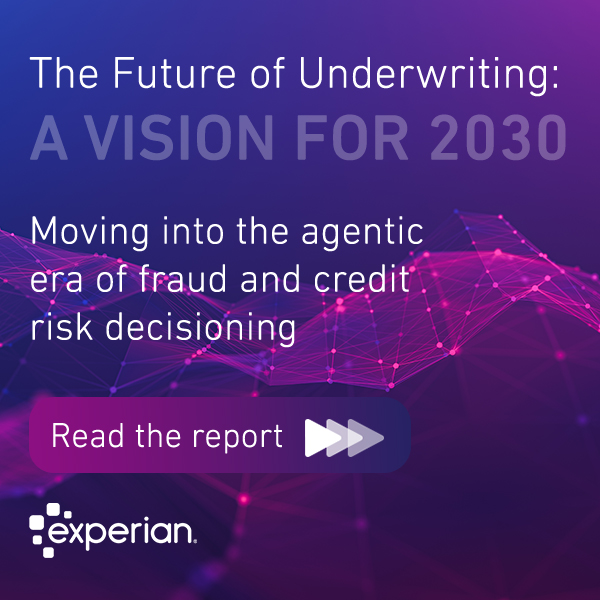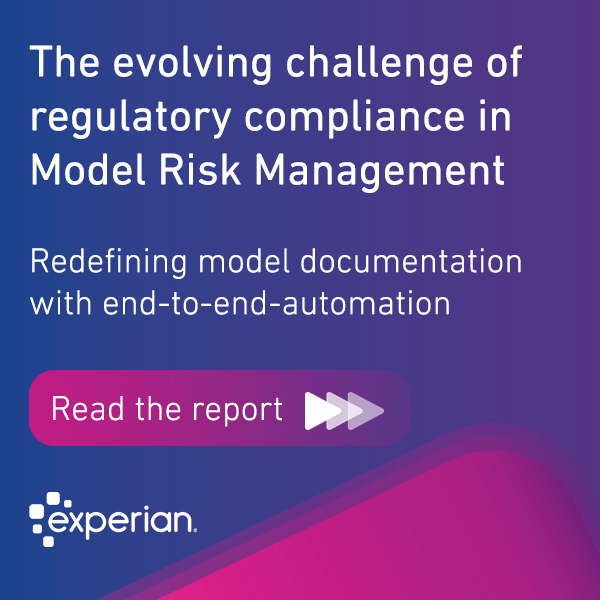Tag: AI

We explore four fraud trends likely to be influenced the most by GEN AI technology in 2024, and what businesses can do to prevent them. 2023: The rise of Generative AI 2023 was marked by the rise of Generative Artificial Intelligence (GEN AI), with the technology’s impact (and potential impact) reverberating across businesses around the world. 2023 also witnessed the democratisation of GEN AI, with its usage made publicly available through multiple apps and tools such as Open AI's Chat GPT and DALL·E, Google's Bard, Midjourney, and many others. Chat GPT even held the world record for the fastest growing application in history (until it was surpassed by Threads) after reaching 100 million users in January 2023, just less than 2 months after its launch. The profound impact of GEN AI on everyday life is also reflected in the 2023 Word of the Year (WOTY) lists published by some of the biggest dictionaries in the world. Merriam-Webster’s WOTY for 2023 was 'authentic'— a term that people are thinking about, writing about, aspiring to, and judging more than ever. It's also not a surprise that one of the other words outlined by the dictionary was 'deepfake', referencing the importance of GEN AI-inspired technology over the past 12 months. Among other dictionaries that publish WOTY lists, both Cambridge Dictionary and Dictionary.com chose 'hallucinate' - with new definitions of the verb describing false information produced by AI tools being presented as truth or fact. A finalist in the Oxford list was the word 'prompt', referencing the instructions that are given to AI algorithms to influence the content it generates. Finally, Collins English Dictionary announced 'AI' as their WOTY to illustrate the significance of the technology throughout 2023. GEN AI has many potential positive applications from streamlining business processes, providing creative support for various industries such as architecture, design, or entertainment, to significantly impacting healthcare or education. However, as signalled out by some of the WOTY lists, it also poses many risks. One of the biggest threats is its adoption by criminals to generate synthetic content that has the potential to deceive businesses and individuals. Unfortunately, easy-to-use, and widely available GEN AI tools have also created a low entrance point for those willing to commit illegal activities. Threat actors leverage GEN AI to produce convincing deepfakes that include audio, images, and videos that are increasingly sophisticated and practically impossible to differentiate from genuine content without the help of technology. They are also exploiting the power of Large Language Models (LLMs) by creating eloquent chatbots and elaborate phishing emails to help them steal important information or establish initial communication with their targets. GEN AI fraud trends to watch out for in 2024 As the lines between authentic and synthetic blur more than ever before, here are four fraud trends likely to be influenced most by GEN AI technology in 2024. A staggering rise in bogus accounts: (impacted by: deepfakes, synthetic PII)Account opening channels will continue to be impacted heavily by the adoption of GEN AI. As criminals try to establish presence in social media and across business channels (e.g., LinkedIn) in an effort to build trust and credibility to carry out further fraudulent attempts, this threat will expand way beyond the financial services industry. GEN AI technology continues to evolve, and with the imminent emergence of highly convincing real-time audio and video deepfakes, it will give fraudsters even better tools to attempt to bypass document verification systems, biometric and liveness checks. Additionally, they could scale their registration attempts by generating synthetic PII data such as names, addresses, emails, or national identification numbers. Persistent account takeover attempts carried out through a variety of channels: (impacted by: deepfakes, GEN AI generated phishing emails)The advancements in deepfakes present a big challenge to institutions with inferior authentication defenses. Just like with the account opening channel, fraudsters will take advantage of new developments in deepfake technology to try to spoof authentication systems with voice, images, or video deepfakes, depending on the required input form to gain access to an account. Furthermore, criminals could also try to fool customer support teams to help them regain access they claim to have lost. Finally, it's likely that the biggest threat would be impersonation attempts (e.g., criminals pretending to be representatives of financial institutions or law enforcement) carried out against individuals to try to steal access details directly from them. This could also involve the use of sophisticated GEN AI generated emails that look like they are coming from authentic sources. An influx of increasingly sophisticated Authorised Push Payment fraud attempts: (impacted by: deepfakes, GEN AI chatbots, GEN AI generated phishing emails)Committing social engineering scams has never been easier. Recent advancements in GEN AI have given threat actors a handful of new ways to deceive their victims. They can now leverage deepfake voices, images, and videos to be used in crimes such as romance scams, impersonation scams, investment scams, CEO fraud, or pig butchering scams. Unfortunately, deepfake technology can be applied to multiple situations where a form of genuine human interaction might be needed to support the authenticity of the criminals' claims. Fraudsters can also bolster their cons with GEN AI enabled chatbots to engage potential victims and gain their trust. If that isn’t enough, phishing messages have been elevated to new heights with the help of LLM tools that have helped with translations, grammar, and punctuation, making these emails look more elaborate and trustworthy than ever before. A whole new world of GEN AI Synthetic Identity: (impacted by: deepfakes, synthetic PII)This is perhaps the biggest fraud threat that could impact financial institutions for years to come. GEN AI has made the creation of synthetic identities easier and more convincing than ever before. GEN AI tools give fraudsters the ability to generate fake PII data at scale with just a few prompts. Furthermore, criminals can leverage fabricated deepfake images of people that never existed to create synthetic identities from entirely bogus content. Unfortunately, since synthetic identities take time to be discovered and are often wrongly classified as defaults, the effect of GEN AI on this type of fraud will be felt for a long time. How to prevent GEN AI related fraud As GEN AI technology continues to evolve in 2024, its adoption by fraud perpetrators to carry out illegal activities will too. Institutions should be aware of the dangers they possess and equip themselves with the right tools and processes to tackle these risks. Here are a few suggestions on how this can be achieved: Fight GEN AI with GEN AI: One of the biggest advantages of GEN AI is that while it is being trained to create synthetic data, it can also be trained to spot it successfully. One such approach is supported by Generative Adversarial Networks (GANs) that employ two neural networks competing against each other — a generator and a discriminator. The generator creates synthetic data, while the discriminator evaluates the generated data and tries to distinguish between real and fake samples. Over time, both networks fine tune themselves, and the discriminator becomes increasingly successful in recognising synthetic content. Other algorithms used to create deepfakes, such as Convolutional Neural Networks (CNNs), Recurrent Neural Networks (RNNs), and Autoencoders, can also be trained to spot anomalies in audio, images, and video, such as inconsistencies in facial movements or features, inconsistencies in lighting or background, unnatural movements or flickering, and audio discrepancies. Finally, a hybrid approach that combines multiple algorithms often presents more robust results. Advanced analytics to monitor the whole customer journey and beyond: Institutions should deploy a fraud solution that leverages data from a variety of tools that can spot irregular activity across the whole customer journey. That could be a risky activity, such as a spike in suspicious registrations or authentication attempts, unusual consumer behaviour, irregular login locations, suspicious device or browser data, or abnormal transaction activity. A best-in-class solution would give institutions the ability to monitor and analyse trends that go beyond a single transaction or account. Ideally, that means monitoring for fraud signals happening both within a financial institution’s environment and across the industry. This should allow businesses to discover signals pointing out fraudulent activity previously not seen within their systems or data points that would otherwise be considered safe, thus allowing them to develop new fraud prevention models and more comprehensive strategies. Fraud data sharing: Sharing of fraud data across multiple organisations can help identify and spot new fraud trends from occurring within an instruction's premises and stop risky transactions early. Educate consumers: While institutions can deploy multiple tools to monitor GEN AI related fraud, regular consumers don't have the same advantage and are particularly susceptible to impersonation attempts, among other deepfake or GEN AI related cons. While they can't be equipped with the right tools to recognize synthetic content, educating consumers on how to react in certain situations related to giving out valuable personal or financial information is an important step in helping them to remain con free. Learn more with our latest fraud reports from across the globe: UK Fraud Report 2023 US Fraud Report 2023 EMEA + APAC Fraud Report 2023

What are lenders prioritising when it comes to Gen AI? We take a look at five transformative use cases in lending, and organisational priorities for integrating Gen AI into customer lifecycle processes. Although Generative Artificial Intelligence (Gen AI) only launched publicly in the form of Chat GPT last November, adoption has been widespread and rapid. Even in typically risk-adverse industries like financial services, our research shows that there is widespread recognition that Gen AI could deliver a range of benefits across business functions. We identified five areas of focus for lenders based on our research. In a study conducted by Forrester Consulting on behalf of Experian, we surveyed 660 and interviewed 60 decision makers for technology purchases that support the credit lifecycle at their financial services organisation. The study included businesses across North America, UK and Ireland, and Brazil. The qualitative research showed that lenders are already using a type of Gen AI, Large Language Models (LLMs), in their operations, with a focus on testing across areas such as customer service and internal processes before deploying to credit operations. We look at the potential use cases, and how businesses are using Gen AI now. 1. Personalised customer experience Customers today expect a personalised lending experience that is tailored to their unique needs and preferences. GenAI can leverage customer data to generate personalised loan offers, recommendations, and repayment plans. This helps lenders improve customer satisfaction and loyalty, leading to increased customer retention and revenue growth. This is an area that is front of mind for the companies in our research – nearly half of businesses surveyed are planning to implement or expand technology capabilities to either upsell or retain customers in the next 12 months. Furthermore, 50% of companies believe that offering more tailored underwriting and pricing is a top priority in their credit operations, followed by 44% who also aim to increase personalisation in marketing, products, and services to their customers. According to the research, some organisations have formed alliances with technology providers like OpenAI and Microsoft to investigate and further explore the use of LLMs. These partnerships involve analysing customer data to identify opportunities for cross-selling. 2. Enhancing models with new data sources With new data sources emerging all the time, Gen AI is one of the technologies that will most likely accelerate the opportunity for businesses to incorporate them into models. Lenders could include sources such as social network data into their models by using LLMs. This unstructured data, including customer emotions and behaviours on social networks, would be treated as an additional variable in the models. According to the research social media data and psychometric data is already used across financial services, to varying degrees. It showed that 35% of retail companies use social media data, while 29% of FinTechs use psychometric data. Auto finance companies sit at lower end of the adoption scale, with only 12% using social media data and 15% psychometric data. 3. Operational efficiencies Gen AI can help bring operational efficiencies to customerjourneys across the entire lifecycle, offering lenders theability to automate and streamline various processes,resulting in improved productivity, cost savings, andenhanced customer experiences. One of the top challenges for businesses surveyed isimproving customer journeys during onboarding, and thiswas particularly significant for credit unions / buildingsocieties (53%). 4. Detecting and preventing fraud Gen AI can play a crucial role in fraud detection by analysing patterns and anomalies in vast datasets. By leveraging machine learning techniques, Gen AI models can proactively identify potentially fraudulent activities and mitigate risks. The ability to detect fraud in real-time improves the overall security of lending operations and helps protect lenders and borrowers from financial losses. Detecting and preventing fraud is a constant challenge for lenders. 51% of retailers and 47% of credit unions/ building societies surveyed said that reducing fraud losses is a key challenge for them. 5. Customer service Driven by advances in the machine learning and AI space, the world of customer service has benefited hugely from the adoption of virtual assistants and chatbots in recent years. This looks to continue, with businesses saying that LLMs are being tested for customer service purposes, allowing lenders to identify customer issues and automate actions. What's next for lenders? The research found that lenders are utilising various machine learning techniques like regression, decision trees, neural networks, and random forest, along with LLMs. Businesses are in the early stages of exploring how they can use LLMs in credit risk models, but it will undoubtedly involve a blend of existing and new capabilities. As with any emerging technology, it’s important to look at potential risk. The research indicated that organisations see challenges and concerns when it comes to the use of LLMs in their models. It is crucial to ensure the models are trusted, validated, and properly understood to avoid reliance on outsourced solutions and maintain control and visibility over the models’ functions. The ability to explain decisions in Gen AI to avoid bias can be difficult, and businesses will be watching the regulators to understand how best to proceed. There is no doubt, however, that Gen AI will optimise the credit customer lifecycle, creating vast opportunities for lenders. Download PDF More on Gen AI

In a study conducted by Forrester Consulting on behalf of Experian, we surveyed 660 and interviewed 60 decision makers for technology purchases that support the credit lifecycle at their financial services organisation. The study included businesses across North America, UK and Ireland, and Brazil. More on Gen AI

Online fraud has increased at unprecedented levels over the past two and half years, with numerous reports coming from all corners of the world to confirm that. From benefits and unemployment fraud to authorised push payment fraud, and more advanced scams such as synthetic identity fraud and deepfake fraud, cybercrime has been on the rise. Understandably, the increase in criminal activity has had a significant impact on financial services businesses, and it is little wonder that this has been reflected in our recent study: • 48% of businesses reported that fraud is a high concern, and 90% reported fraud as a mid-to-high concern • 70% of businesses said their concern about fraud has increased since last year • 80% of businesses said that fraud is often or always discussed within their organisations High levels of fraud have also raised consumer concern, and their expectations of the protection businesses should offer them. Nearly three-quarters of consumers said that they expect businesses to take the necessary security steps to protect them online. However, only 23% of respondents were very confident that companies were taking steps to secure them online. Businesses need to take additional steps to meet consumer demand, while also protecting their reputation and revenue streams. Businesses are investing in fraud prevention, so why isn’t it working? As a result of the rise in fraud during the pandemic, there has been an increase in spending related to fraud prevention tools and technology, with 89% of businesses surveyed in our latest research indicating that investment in fraud detection software is important to them. However, there is a risk that institutions could take a siloed approach, and funds could be spent on point solutions that solve one or two problems without adding the needed flexibility to fight multiple attack patterns. This gives fraudsters the opportunity to exploit these gaps. Orchestration and automation drive fraudsters away Criminals constantly evolve. They are not new to technology and have multiple attack patterns that they can rely on. They also share information between themselves at a higher rate and pace when compared with financial institutions, banks, and merchants. Fraudsters can learn how to bypass one or two features in an organisation’s fraud prevention strategy if they recognise weak spots or a vulnerability that they can take advantage of. However, when multiple fraud prevention tools and capabilities work harmoniously against them, the chances are higher that they will eventually be blocked or forced to move to a weaker place where they can exploit another system. Synchronizing multiple solutions together is the key to excellent fraud orchestration Fraud orchestration platforms give businesses the chance to layer multiple solutions together. However, taking a layered approach is not only about piling multiple point solutions but also about synchronizing them to achieve the best output possible. Every solution looks at different signals and has its own way of scoring the events, which is why they need to be governed into a workflow to achieve the desired results. This means that institutions can control and optimize the order in which various solutions or capabilities are called, as the output of one solution could result in a different check for a subsequent one or even the need to trigger another solution altogether. It also gives companies the ability to preserve their user journeys while answering different risks presented to them. Some businesses are seeking to build trust with customers but want to stay invisible to remove friction from their digital customer experience. This is where capabilities such as device intelligence, behavioural biometrics, or fraud data sharing could be added as an additional layer in the fraud prevention strategy. Those additional solutions may only be called 30 per cent of the time when there is a real need for an additional check. Excellent orchestration means that organisations can rely on multiple solutions while only calling the services they need, exactly when they need them. Building trust through a secure but convenient customer experience. Machine Learning should be the final layer to rule them all The results from our research revealed the top initiatives that businesses are leveraging to improve the digital customer journey with the top two being: • Improving customer decisioning with AI • New AI models to improve decisioning While our April 2022 Global Insight Report showed that consumers are becoming more comfortable with AI, with 59% saying they trust organisations that use AI. Fraud orchestration platforms allow companies to deploy unified decisioning by leveraging machine learning (ML) on top of multiple fraud prevention tools. This means they can rely on one cohesive output instead of looking at separate, sometimes contradictory results across various platforms and making subjective decisions. ML can also offer explainability by pointing out the attributes that contributed the most to a particular suggestion or decision. These could be attributes coming from a few different tools instead of one. This also means that operational teams, like fraud investigators, have a single view of activity, resulting in operational efficiency - removing the need to log in to different tools and look at multiple screens, views, and scores, while also enabling faster decisions. Stay in the know with our latest research and insights:

Did you miss these March business headlines? We’ve compiled the top global news stories that you need to stay in-the-know on the latest hot topics and insights from our experts. Experian partners with Black Opal to bring credit options to US immigrants PYMNTS.com covers the partnership between Experian and Black Opal to boost consumer credit access to immigrants in the US. Using Crosscore and PowerCurve, Block Opal will be able to make real-time credit decisions while also managing using the platform’s tools to better manage identity verification and fraud prevention. Fraud shifting as online activity increases In this CUNA article, Brock Fritz explores Experian's Future of Fraud Index for 2022, with Experian's Chief Innovation Officer, Kathleen Peters, offering up solutions for businesses looking to mitigate the effects of more online fraud. How AI is modernizing online transactions Donna DePasquale, EVP of Global Decisioning Software, writes in Dataversity about the importance of automation and insights as objectives driving modernization through AI for businesses, and what they should focus on in order to increase customer acquisition. Online payment fraud Online payment fraud will reach 206 Billion by 2025. David Britton, Experian VP Industry Solutions Global Identity and Fraud is interviewed by David Cogan, host of the Heroes Show and founder of Eliances entrepreneur community. Stay in the know with our latest research and insights:

The ecosystem of credit lending platforms and technologies has rapidly grown in the past year. Lenders now find themselves in an increasingly competitive market with new players emerging on the scene. More companies now have access to advanced analytics and automation capabilities, and this is helping businesses improve the accuracy and inclusivity of consumer lending decisions – a giant step toward achieving their growth ambitions. Our recent research shows that one of the top priorities for businesses has been to invest in new artificial intelligence and machine learning models for smarter customer decisions. But how effective is building new AI models without considering the data? What is data-centric AI? Building AI models on fixed data has already become an outdated approach. But by coupling data with the best model, better outcomes can be achieved. The concept of data-centric AI was coined by leading thinker in the AI space, Andrew Ng. Ng believed that models in production are only as good as the point-in-time data used to build them. As businesses continue to receive new data, this data needs to feed back into the model if it’s going to continue delivering the best results. This continuous loop of enriching the model with new data can be applied across use cases. The value of data-centric AI models for acquiring new customers By using the latest available data, rather than from 6-12 months ago or longer when the model was originally developed, data-centric AI models can: • More rapidly account for changes in the economy and consumer finances • Reach under-represented populations and provide greater access to credit • Take advantage of newly available types of information from data providers The value of data-centric AI in existing frameworks More observations AI is often limited by the data that was used to create the model. By using a more fluid open-source alternative, different data sets can be inputted to get more observations based on different characteristics and findings. For example, if a business wants to acquire a new type of customer, traditional AI would require a new model with new data sets to be in order to target this new customer. With data-centric AI, businesses can use an existing model and simply expand the data, thus allowing the model to work far more efficiently and target a new consumer base. It is a shared view that businesses should not build models with just their own data, because those data sources are too limited. At the very least, businesses want to combine data with a peer sample. However, an even better way is to use hybrid data sets in order to get the most observations. Data-centric AI makes that process easy without the need to create different models to see different outcomes. Up-to-date data The world is in a state of flux—populations change, people change. This means that the data pools AI models draw on may be compromised, no longer relevant, or have new meaning over time. It’s important to keep AI data sets recent and up to date, and not assume that the models used two years ago still apply today. For AI models to operate efficiently they need current, relevant data. Having a data-centric approach and sweeping through collected observations is essential for any business relying on their AI solutions. Businesses must have processes to understand and test their data to be sure the values are still adding up to what they should be. Being disciplined about data hygiene, all the way back to the source, is a necessity. Enriched and expanded data With model-centric AI, businesses are limited by the data they start with. Data-centric AI makes it possible to expand on the current customer base, which already includes data on customer attributes, with new potential customers that might mimic characteristics of a business's current base. Expanded data can also play a role with financial inclusion and credit worthiness. Having a low credit score does not necessarily mean the consumer is a bad risk or that they shouldn't be allowed access to credit—sometimes, it could mean there is simply a lack of data. Expanding data to include varied sources and adding it to current models without changing their structure, enables businesses to provide credit for individuals who may not have originally been accepted. This new approach in AI is creating solutions that are far more inclusive than previously possible. Data has massively expanded and is constantly evolving. By using data combined with advanced analytics, such as AI, there will be more sophistication in the observations that come from the data. This will allow businesses to better decide what data they choose to rely on while ensuring accuracy. By using expanded data sources, the outcomes of models are changed, leading to more inclusive models better fit for decision making and improving performance. "Models in production are only as good as the point-in-time data used to build them." Andrew Ng Infographic: Why data-centric AI leads to more accurate and inclusive decisions Stay in the know with our latest research and insights:

During the week of International Womens' Day, we shine a spotlight on the women thought leaders across Global Decision Analytics. In this Juniper Research interview, Kathleen Maley, VP of Analytics Product Management talks about the current state of data analytics, with the backdrop of Juniper Research's Future of Digital Awards and its recognition of AIS. Watch the video to discover: Current problems with data analytics Broad nature of activities of what is now defined as analytics Model development, model scoring, model regulatory control, model risk management and model deployment Where is data coming from - is it clean and do we understand it? Importance of humans in the development of algorithms Lack of data - where do we need to close gaps? How does looking at the past help with looking to the future - the importance of current/real-time data The expense of maintenance - tech stack - there are now alternatives Democratization of data - expanding credit access by using non-traditional sources of data Talent shortage of data scientists - low-code and no-code Extracting data value for businesses when data is ever-expanding Stay in the know with our latest research and insights:

The pandemic may have accelerated digital transformation across the world of financial services , but behind the scenes, banks and lenders still face a significant tech debt, and many organizations are committed to continuing the innovation. That's for good reason. Today's consumers increasingly expect a digital-first customer experience. The days of visiting a local bank branch to access financial services and products are fading away. Fintechs have risen to the occasion, transforming the market and meeting the growing digital demand. For traditional banks and lenders, waiting to innovate is no longer an option—it's a must to remain competitive. So what comes next? Here's a look at the technology trends that stand to impact and transform financial services as we advance. 1. The rapid rise of low-code/no-code solutions According to a recent survey from TechRepublic1, nearly half of companies are already using low-code/no-code solutions (LCNC). The same report also notes that among companies not using LCNC solutions, one in five plans to begin within the year. The driving force behind this trend is the global shortage of digital skills, from software development to data analytics to information security. The pool of technical talent has long been smaller than the demand, and the Great Resignation has only exacerbated the problem. For instance, 75% of software developers2 report they're currently looking for other jobs. Amidst this ongoing talent shortage, there's another stressor—the need to deploy technology products to market faster and faster. LCNC solutions answer these challenges by making doing so easier and quicker. The technology democratizes software development, allowing business users—or citizen developers—in different functions to design and deploy applications. With the skills gap likely to continue, the interest in LCNC solutions will too. LCNC solutions enable financial institutions to keep pace with technology changes and meet the digital demand, even with limited technical resources. 2. Leveraging data will require adding value—and engendering trust Financial service organizations have used advanced data analytics to provide consumers with more personalized products. And consumers have been on board as long as they see the benefit. For example, a 2021 consumer survey by Experian showed that 42% of consumers would share personal data, and 56% would share contact information, if it improves their experience. However, this research speaks to growing tension between consumers and financial service providers. The first want more personalized services, but they are also more selective about which companies they share data with. Consider a recent McKinsey study that revealed that 44% of consumers don't fully trust digital services3. As we advance, organizations that want to build and keep consumer trust will need to be thoughtful about the data they ask for and increasingly transparent about how they plan to use it. 3. Doubling down on AI but looking for ROI in the process AI has proven helpful in multiple ways, from powering recommendation engines and chatbots within the retail world to improving fraud analysis and prevention in the banking industry. But there's still so much more organizations can do, especially with the AI they already have. Financial service and fintech companies have funneled massive resources into AI solutions. However, only 20% of AI models4 are ever used in widespread deployment. What’s more, the current average return on AI investments hovers around 1%. This year, expect to see more organizations examining the ROI of AI-powered technology and looking to get more from the investments they've made. Technology partners can help by identifying additional opportunities for AI models to drive customer engagement, validate credit scoring, and protect businesses against fraud. 4. Banking-as-a-Service will yield even more choices and more competition There have long been high barriers that protect traditional financial service organizations from much new competition. But the advent of open APIs and Banking-as-a-Service (BaaS) is knocking these barriers down, yielding a considerable influx of startups that provide banking-like services. And this wave of new fintech has captured consumer interest. Consumers have shown that they’re willing to try financial service products from an array of providers; they're not married to sticking with traditional banks. In fact, 27% of global consumers5 have relationships with neobanks, and 40% report using financial apps6 outside of their primary banking app. However, the gold rush towards BaaS will yield a few winners and a lot of losers. The question for the near-term is who will survive in this crowded market. Consumers will also begin to figure out what makes sense in terms of how many financial organizations they want to connect with and when to say enough is enough. 5. Embedded finance is the new black in retail In a similar theme, the influx of embedded finance products into retail experiences continues to gain traction. There's only more to come. Multiple leading retailers, both longstanding and new D2C brands, have incorporated Buy Now Pay Later (BNPL) payment options into their checkout process, and shoppers are rapidly adopting these new payment methods. One-third of consumers report they've used BNPL before7. Though the payment method still lags far behind other forms of credit, awareness of BNPL and other embedded finance solutions is rising, especially among younger consumers. Looking forward, expect to see embedded finance make inroads not only with more retailers but also across other industries such as hospitality or entertainment. These pressing tech trends are reshaping financial services. In the process, they're bringing new solutions to consumers and new opportunities to banks and non-traditional lenders. Organizations that keep pace with these trends will lay the foundation for their next generation of customers as well as the future of their business. More 2022 trends and predictions Stay in the know with our latest research and insights: 1.TechRepublic Survey: Low-code and no-code platform usage increases 2.Stack Overflow: The Great Resignation is here. What does that mean for developers? 3.McKinsey: Are you losing your digital customers? 4.ESI ThoughtLab: Driving ROI through AI 5.EY: How can banks transform for a new generation of customers? 6.Axway: Consumers are starting to sense an open banking transformation 7.PYMNTS.com: No slowdown in sight for surging BNPL as consumers want it, retailers need it

Steve Wagner, Managing Director, Global Decision Analytics on Redesigning the future of consumer lending with data and analytics. Find Steve Wagner's interview in Raconteur's Future of data report to discover what businesses need to do to succeed in an increasingly digital world. “The good thing is that technology and data now allow businesses to put the customer journey at the heart of what they’re doing. With the advanced technologies available today, businesses can access relevant data and deliver on customer expectations in their moment of need. Whether it’s access to a loan or mortgage, or to consolidate debts, a real-time view of the consumer is possible.” Read the full article and find out about: Why the digital customer experience, enabled by both data and analytics, is the new battleground for many industries. Consumers reporting they were online 25% more in 2021 compared to a year before. Online retail sales saw four years of growth in just 12 months during the Covid pandemic. Demand for frictionless journeys through biometrics or multimodal authentication mean customers can see the value exchange in sharing personal data. Behavioural biometrics is the next frontier in tackling fraud and providing a seamless customer journey. Technology is allowing us to analyse far more data sources in real time, providing a comprehensive picture of an individual. Open Banking and the democratisation of data are part of the progressive change around data. Importance of extracting the insight lenders and fintech providers need to implement the best customer journey and make the best decisions. Businesses can make credit-risk decisions using automation and advanced analytics. This will lead to more opportunities for credit and better financial inclusion. Harnessing the power of 'insight everywhere' for better knowledge bases. "The application of advanced analytics, artificial intelligence and machine learning is allowing businesses to tailor their services to an audience of one - at scale." Stay in the know with our latest research and insights:

*Stats from Experian Global Insights Research Read related content The evolution of data: Unlocking the potential of data to transform our world Be more open: Results of the 2021 Open Banking survey - Experian Academy Full text: The future of consumer lending in a digital economy With the advanced technologies available today, businesses can access relevant data and deliver on customer expectations in their moment of need. As more people go online and use digital channels, your business must do more to create a seamless and secure experience. Online activity has increased by 25% globally Online retail sales saw 4 years of growth in 12 months Now online, consumers have high expectations for digital experience without sacrificing security, convenience, and privacy. 64% of consumers have abandoned an online transaction in the past 12 months Consumers, regardless of age, now prefer online banking and payments over in-person transactions The future of credit and fraud risk management is integrating data and technology seamlessly to put the customer at the centre of it all. 74% of businesses are adopting AI (2021), up from 69% the year before Businesses can embrace customer-centricity at scale through: Behavioural biometrics within a layered strategy of defence to make it easier to tackle fraud and maintain a seamless customer journey Open source data so businesses of all sizes can build a view of potential customers, minimise credit risk, and bring more people into mainstream financial services Advanced analytics, AI, and machine learning for real-time underwriting, fraud detection and a truly personalised service “The market is now driven by consumer demand for digital services. Those companies that are able to tailor the digital customer journey – so it reflects the best-in-class consumer experience – are the ones that will win.” – Steve Wagner, Managing Director of Global Decision Analytics

Did you miss these January business headlines? We’ve compiled the top global news stories that you need to stay in-the-know on the latest hot topics and insights from our experts. Next-gen AI analytic apps in credit In this Lendit Fintech webinar about the future of AI analytics in credit, Srikanth Geedipalli, SVP of Global analytics and AI, joins a panel of experts to explain how Experian deals with delinquencies and retains customers using a proactive approach. A successful DevOps strategy is more than just technology Dr Mark D. Spiteri writes on the Forbes Technology Council about how Experian has embraced DevOps culture to not only improve internal IT processes, but also to reshape the mindset of product development teams. 7 payments trends for 2022 as innovation climbs David Bernard, SVP Global Decision Analytics, talks to Payments Dive about cross-border services, BNPL and cybersecurity tools, and how there will be no shortage of innovation and competition in the payments industry as businesses and their regulators shape new digital tools. Deepfakes – the good, the Bad, and the ugly In this Forbes article, Eric Haller, VP & General Manager, Identity, Fraud & DataLabs, talks about how the creation of deepfakes can be thought of as the latest development in the ongoing battle between business and counterfeiting. Stay in the know with our latest research and insights:

The ecosystem of credit lending platforms and technologies has rapidly grown in the past year. The top business priority emerging from the pandemic has been to prioritise investments in new artificial intelligence and machine learning models for smarter customer decisions. According to our latest report, business confidence in AI is growing: 81% up from 77% last year. Three reasons why data-centric AI models lead to more accurate and inclusive decisions More observations to better represent the population Easy o update with the most current data Enriched and expanded data sets for a complete view of the customer Stay in the know with our latest research and insights:




